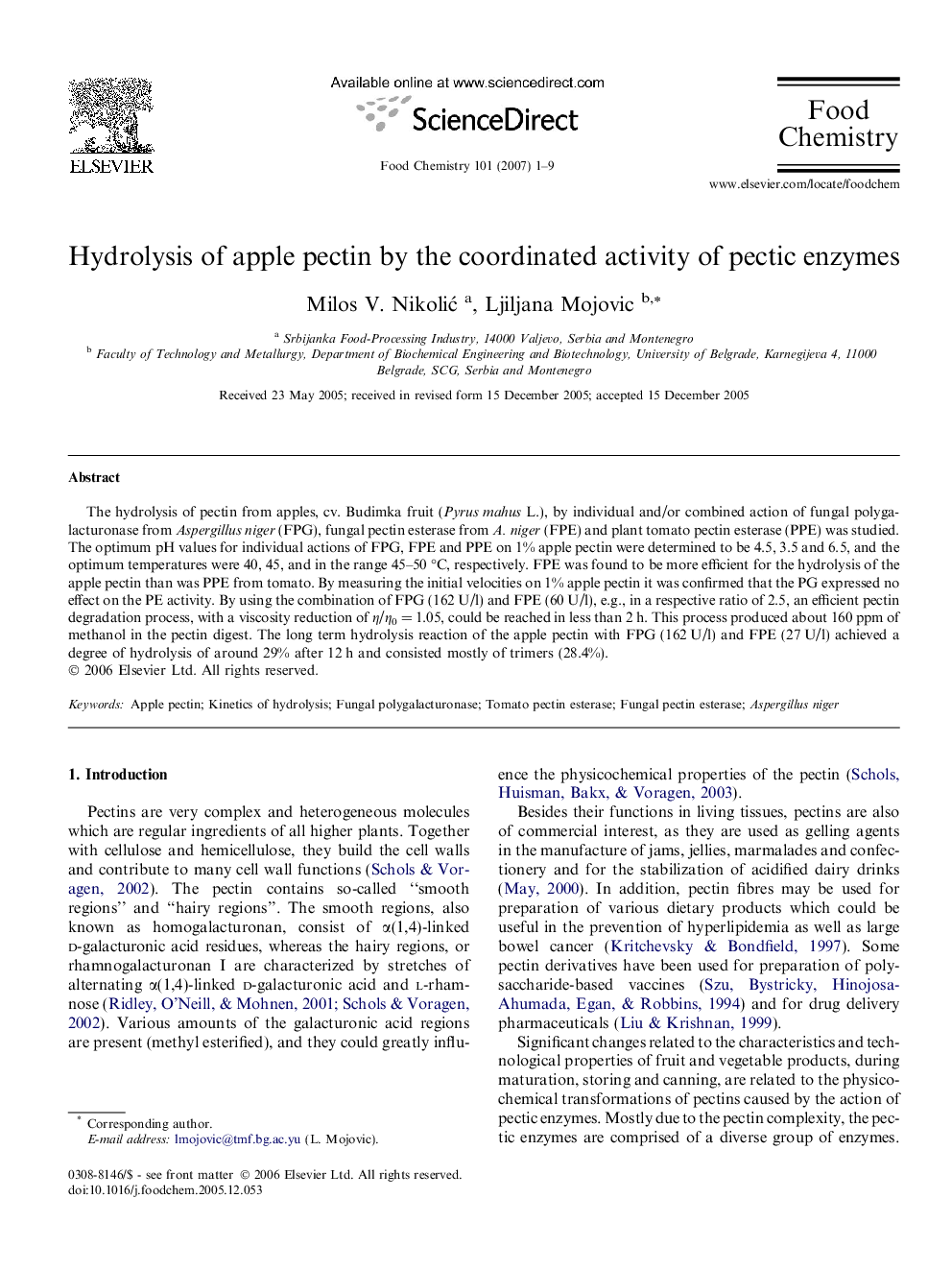| Article ID | Journal | Published Year | Pages | File Type |
|---|---|---|---|---|
| 1190519 | Food Chemistry | 2007 | 9 Pages |
The hydrolysis of pectin from apples, cv. Budimka fruit (Pyrus mahus L.), by individual and/or combined action of fungal polygalacturonase from Aspergillus niger (FPG), fungal pectin esterase from A. niger (FPE) and plant tomato pectin esterase (PPE) was studied. The optimum pH values for individual actions of FPG, FPE and PPE on 1% apple pectin were determined to be 4.5, 3.5 and 6.5, and the optimum temperatures were 40, 45, and in the range 45–50 °C, respectively. FPE was found to be more efficient for the hydrolysis of the apple pectin than was PPE from tomato. By measuring the initial velocities on 1% apple pectin it was confirmed that the PG expressed no effect on the PE activity. By using the combination of FPG (162 U/l) and FPE (60 U/l), e.g., in a respective ratio of 2.5, an efficient pectin degradation process, with a viscosity reduction of η/η0 = 1.05, could be reached in less than 2 h. This process produced about 160 ppm of methanol in the pectin digest. The long term hydrolysis reaction of the apple pectin with FPG (162 U/l) and FPE (27 U/l) achieved a degree of hydrolysis of around 29% after 12 h and consisted mostly of trimers (28.4%).
